Share this article
Learn from the brightest minds how to predictably and efficiently grow revenue.
Related Content
B2B Sales Benchmarks: 2023 H1 Update
The latest update from the 2023 B2B Sales Benchmarks analysis of over $37bn in pipeline.
How to improve AE quota attainment (according to data)
23% of reps are contributing 83% of revenue. Here's how to solve it (with data)
How to close more target accounts with deal qualification
Sales methodologies guide sellers on how to engage prospects at various sales stages. At the very first stage, qualification methodologies (such as Challenger, BANT, MEDDPICC®, etc.) have long been established to create structure and process when opportunities enter the pipeline. Ultimately, the goal is to create consistency at different stages, ensuring sellers follow best practices…
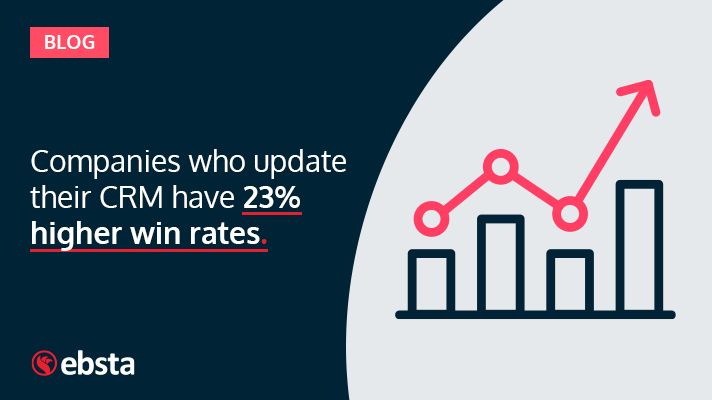
Companies who update their CRM have 23% higher win rates
What is the most common problem faced by sales teams?
Our bets are on sales reps not updating their CRM.
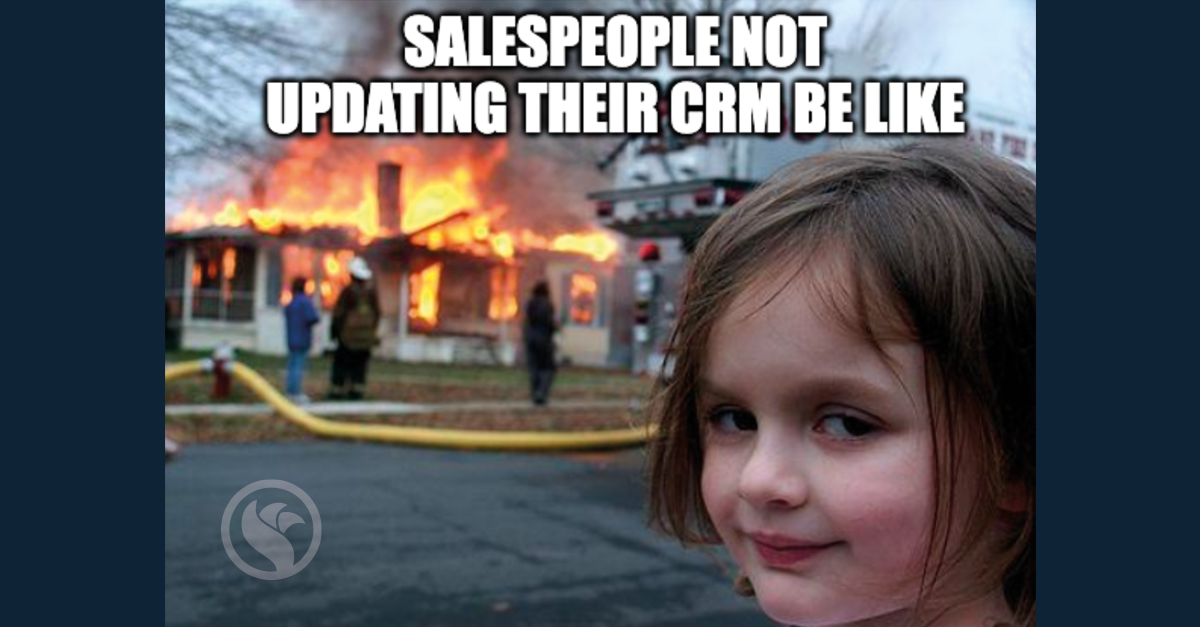
ARGHHHHH. It is indeed a nightmare for sales teams.
The average sales rep spends almost four hours per week updating his or her CRM.
How often are YOUR sales reps updating their records?
We analyzed 122,236 opportunities from 16 high and low-performing companies to uncover:
- How often the CRM is updated
- If these changes are positive or negative
- Whether updating the CRM really is as valuable as people think
Let’s dive into the data
Data Point #1 – High-performing companies ensure their reps are updating the CRM daily, not just playing catch-up once a week.
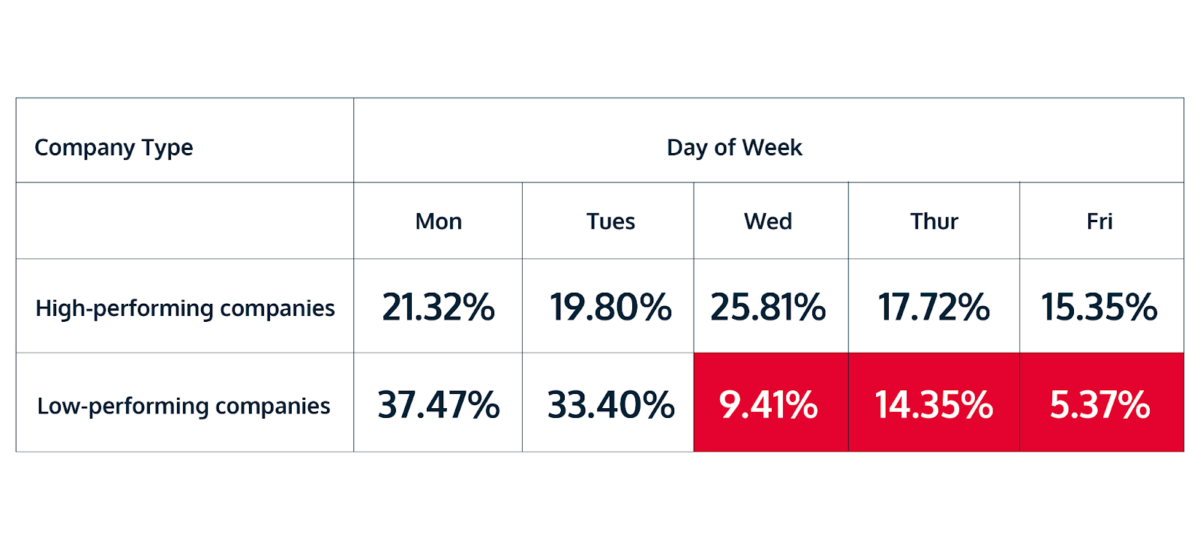
High-performing companies make changes throughout the week, whereas low performers are only making changes at the beginning.
They keep their CRM up-to-date as and when opportunities change.
This indicates that high-performing companies potentially have daily standups opposed to weekly meetings.
Whereas, the majority of CRM updates for low-performing companies are made on Monday or Tuesday. This indicates a weekly meeting which is probably held on Wednesdays.
Data Point #2 – The more high-performing companies updated their CRM, the more deals that were won.
The same pattern was not found in low-performing companies.
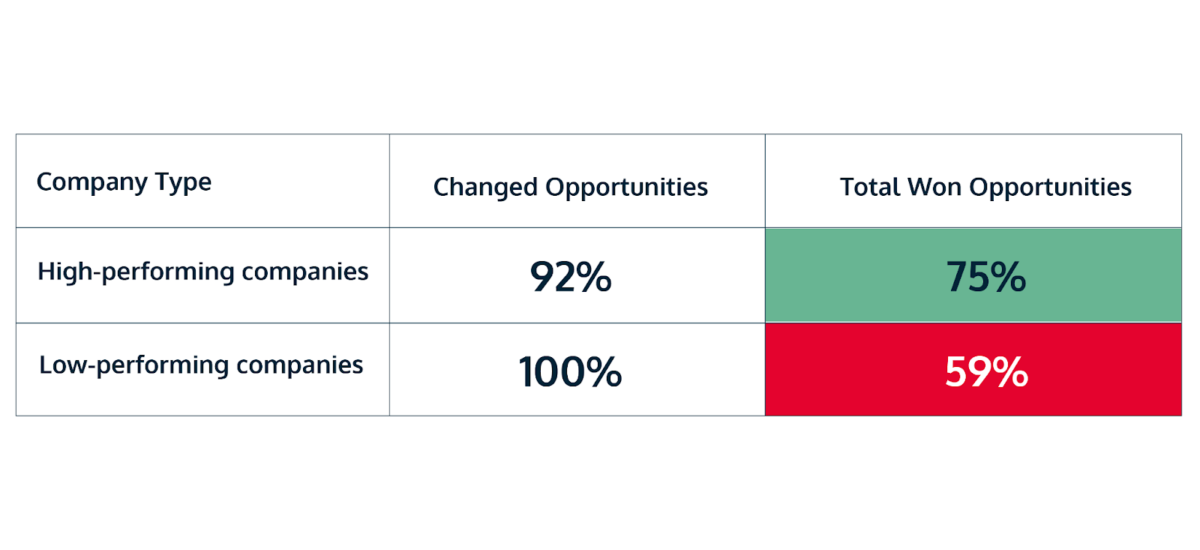
Even though the number of changed opportunities is lower for high-performing companies, the total won opportunities is higher. Why?
The changes made for high-performing companies are positive changes.
Positive changes are changes that increase the likelihood of a deal closing successfully.
For example, updating their CRM with close dates or the deal amount.
This indicates two things:
- high-performing companies have a more disciplined process and
- they use their CRMs more efficiently.
Data Point #3 – High-performing companies have more positive changes than low-performing ones.
For example, one positive change is constantly updating their close dates.
This is positive because managers know how much time they have to close.
Another example of a positive change is updating the deal amount.
More frequent updates, means real-time visibility, leading to more effective feedback when reps need it.
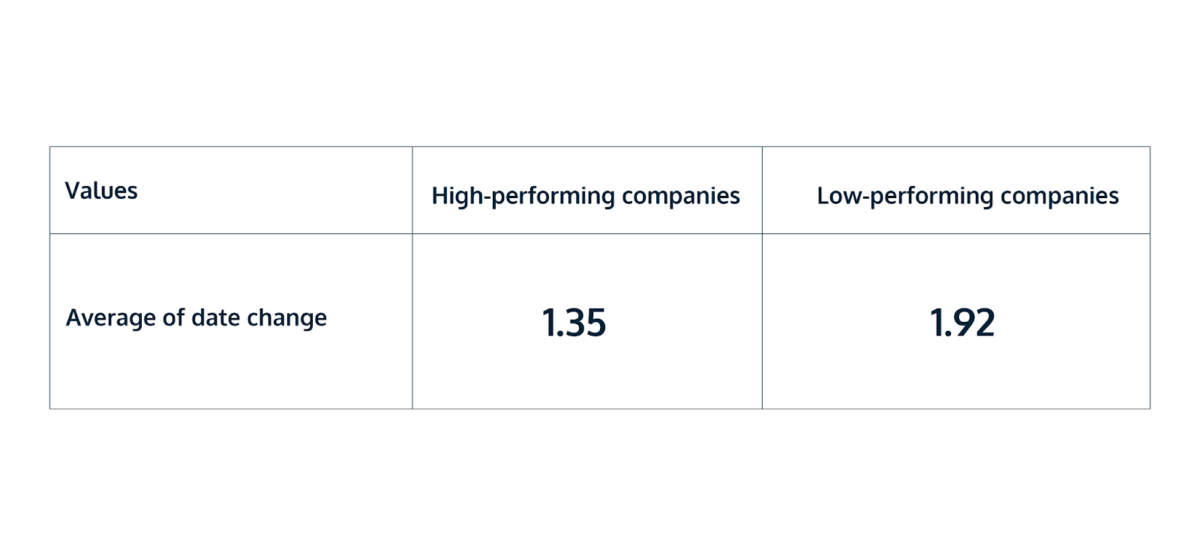
High-growth companies are more accurate in their close date estimates.
The average date change is lower for high-performing companies.
This suggests that high-performing companies are more accurate in their close date estimates.
As a result, they are less likely to change the close date of a deal which is reflected in the table above.
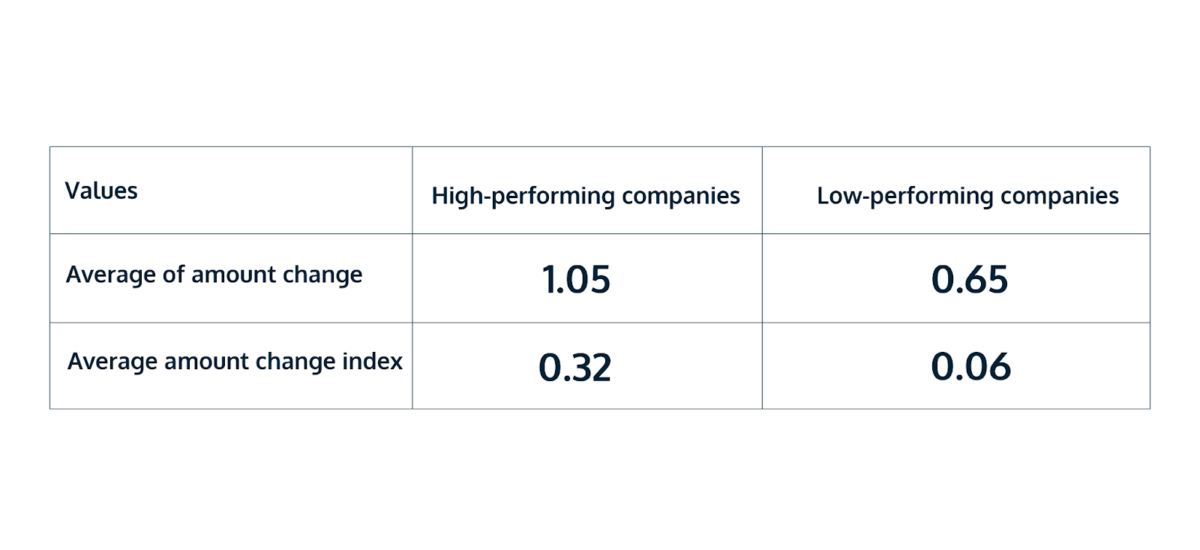
The average amount change index shows how much the deal amount has changed over a set period of time.
For high-performing companies this number is higher indicating that amount changes are more likely to be increases. Unlike low-performing companies.
An increase in the deal amount means high-performing companies are upselling more than low-performing ones.
The one situation you DON’T want to be in
Updating the CRM as and when you please reduces data accuracy as sales reps can be biased or even forget all the information they need to update.
According to the data, the CRM is often updated at the beginning of the week for low-performing companies.
By the time their 1:1s roll around on Wednesday or Thursday, the data is already out of date.
As a result, managers do not get a true picture of their sales reps’ pipeline.
Sales deals change FAST and 3 days of a CRM not being updated might as well be a lifetime.
This could lead to deals slipping irreversibly as reps will not get the correct coaching they need to move deals along to a close.
For example, if there was an objection on Friday and this was not entered, when Monday comes around, the rep may have forgotten or paint a more positive picture for their manager.
The manager could have a nugget of wisdom that is needed to overcome this objection but no CRM data entry = no nugget of wisdom.
2 reasons you should GET UPDATING today!
Updating CRM in a timely manner improves data accuracy. Why?
Because you are capturing MORE information.
Here are two major benefits of updating your CRM:
Benefit 1 – Sales reps are updating when it is fresh in their mind.
Compared to updating in bulk where sales reps are open to being biased in order to fit what they are trying to show their managers.
This ensures that the data is as accurate as possible which brings me to the next point.
Benefit 2 – Accurate data allows managers to provide more specific and timely feedback.
Managers have more information on how to coach their reps as they have improved visibility on how deals are progressing throughout the week.
Managers have their finger on the pulse of their pipeline.
Reps can get the coaching when they need it and more importantly when they need it.
This prevents good opportunities from slipping.
For example, if they notice an objection, managers can nip this in the bud with timely feedback.
Reps are now equipped with the information they need to close more deals.
Key takeaways
- Higher performing salespeople tend to update their CRM with their opportunities more frequently and with more positive changes
- The number of weekly changes and won opps are related. More updates = higher win rates. As illustrated in the graph below.
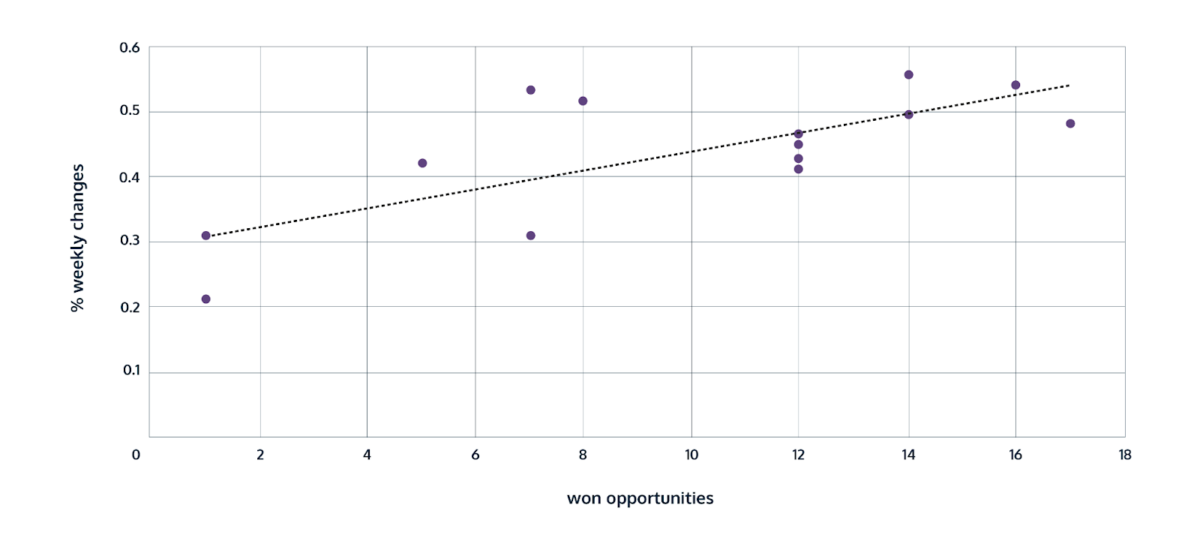
How do more updates result in higher win rates?
More updates provide better visibility to managers on the state of the deals in their pipeline.
Now, managers can coach their sales reps in a more effective way.
As they now know exactly what problems they need to overcome and cater feedback based on this information.
This results in more deals being closed and a better success rate at upselling.
More closed business = more revenue for high-performers – it is as simple as that.
Subscribe to receive cutting-edge sales insights straight to your inbox.


